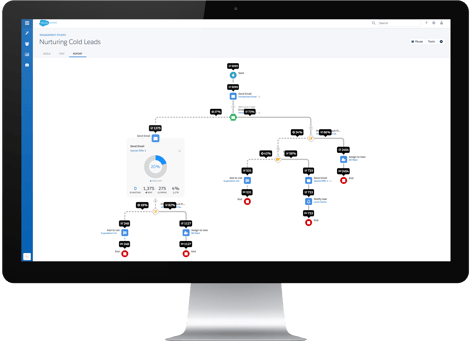
Our regular readers will know that we recommend marketing automation to SMBs doing B2B and B2C selling online. However, one of the more intimidating factors is what firms see as the learning curve that accompanies using a marketing automation platform.
After the cost, this is generally the most intimidating factor. However, we’re happy to report that this shouldn’t be an obstacle, since marketing automation learning will build off of existing skill-sets, and it’s easy to fill in existing gaps in your knowledge. Here is a guide on how to learn marketing automation in order to overcome this hurdle.
1. Before you begin
Just as the most important part of any building is the foundation, the most important parts of a marketing automation strategy are the fundamental principles of marketing.
This means that your marketing automation plan will rely on the savvy decisions that would undergird any marketing effort. For starters, you should have:
- Clearly defined short- and long-term goals.
- A target audience, whose pain-points your product will alleviate.
- A content plan that combines a blend of evergreen and timely content.
- A web and social media presence that will communicate clearly and effectively with customers and prospective customers.
And so on. Anyone doing B2B or B2C selling online should understand the fundamentals of marketing, but it’s important to keep in mind that a marketing automation plan will augment this basic template.
2. Choosing a platform
Having established the fundamentals or a good campaign, your firm is ready to map out what marketing automation will accomplish for you. Stakeholders in your firm will have to determine what specific processes are going to be automated.
Some of the basic functions, like lead monitoring and scoring or managing and sending emails, are natural candidates for automating. Once you’ve established these details, you’ll be ready to map out your expectations for future marketing campaigns. When you know what your team wants to accomplish going forward, you can pick a platform that’s best for you.
As you know, we covered the giants of the marketing automation field in our series comparing the respective virtues and drawbacks of the different platforms. As we discussed in the introduction to our marketing automation series, your choice will be based primarily on 1) your firm’s needs, 2) the ease of onboarding and training, and 3) pricing.
We would recommend that you consult our series once more in order to make your choice.
3. The marketing automation learning process
Once you’ve decided on a marketing automation platform, you’re ready to learn marketing automation. The training process will be the steepest learning curve, although the best platforms make onboarding easy.
Some marketing automation platforms offer training, generally for a large fee. HubSpot offers a free certification and training course, and Salesforce Pardot and Marketo, offer certification courses at a more affordable price than training seminars. The biggest firms, like Pardot and Marketo, also offer white papers and other training material which will be more affordable and meet your onboarding needs.
A few more things to think about as you begin
- Have your processes mapped out clearly as you begin to automate. This will help you fill in gaps as you go.
- Have your nurturing planned out in advance. Once you have implemented a marketing automation plan, you can plug these steps into the software.
- Have content ready to go, so you can start a campaign as soon as you sign up.
4. A sample campaign
Once you’ve begun learning marketing automation software, you can start your first email campaign—and plenty of people learn by doing, so now is the time to do.
- Create your marketing strategy, with clearly defined goals and measurable benchmarks.
- Create several templates for various target audiences, to enable you to do A/B testing. Fortunately, you’ll find that a marketing automation platform makes this easier than ever before.
- Add a little spice: this could be something like a preview for more content or interesting, highly shareable content like videos or infographics.
- Measure your returns.
Your returns are an area that marketing automation makes easier than ever before, so you and your colleagues can easily see what your first campaign has returned. The metrics that come in as a result of your first campaign are actionable data that will inform subsequent campaigns, and they are building blocks for long-term success. You will find that marketing automation platforms offer new levels of optimisation to enable future success.
As in so many other fields, marketing automation provides new insights the longer you use it. However, the fundamentals should be easy to grasp for any skilled online marketer. The hurdles to using marketing automation can be most effectively overcome by clearly laying out expectations and existing capabilities, choosing a platform based on those criteria, and then investing in training once you’ve chosen a marketing automation system.
As always, we are happy to provide expertise for those curious about marketing automation learning! Contact us today if you’ve decided that the time is right for your firm.


